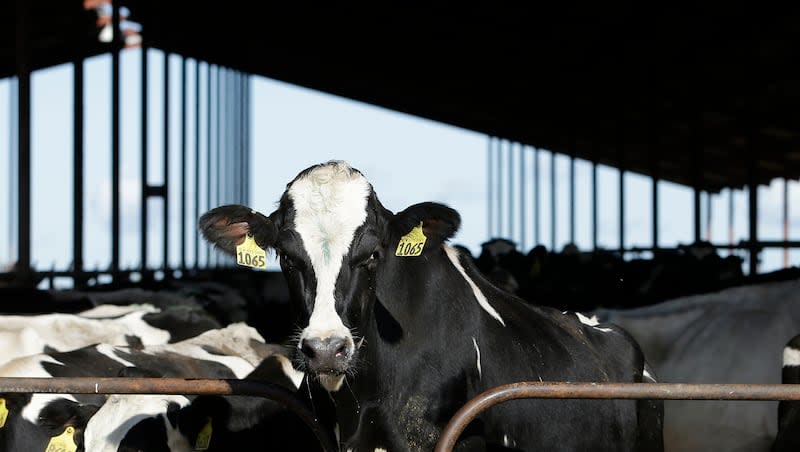New case of avian flu confirmed in Michigan dairy farm worker

A second human case of avian flu related to the multistate outbreak in dairy cattle has been confirmed by the Centers for Disease Control and Prevention, which said a dairy farm worker in Michigan had red, irritated eyes. A CDC lab confirmed that it was bird flu. It’s the third case in the U.S.
The second dairy-cow-related case is very similar to the first, involving a dairy farm worker in Texas who also had eye irritation.
The public health giant still considers bird flu’s risk to humans low.
The case, however “underscores the importance of recommended precautions in people with exposure to infected or potentially infected animals. People with close or prolonged, unprotected exposures to infected birds or other animals (including livestock), or to environments contaminated by infected birds or other animals, are at greater risk of infection,” per CDC.
The infection was discovered through the monitoring system implemented to track whether avian flu is infecting those who work closely with infected cattle. An upper respiratory tract specimen tested negative for the H5N1 virus, but when health officials took a sample directly from the eye, the virus was confirmed.
The announcement said conjunctivitis, which is an eye infection, has been seen with previous human avian influenza A viruses and is part of the surveillance for the existing strain found in dairy cattle. “While it’s not known exactly how eye infections result from avian influenza exposures, it may be from contamination of the eye(s), potentially with a splash of contaminated fluid or touching the eye(s) with something contaminated with (the flu) virus, such as a hand,” CDC reported.
The agency noted that high levels of the virus have been found in unpasteurized milk from H5N1-infected cows. Earlier tests showed that pasteurized milk is safe, as the process kills the virus.
Because of health concerns related to food, the U.S. Department of Agriculture and public health officials have tested beef and reassured the public that cooking burgers to the recommended temperature (145 degrees Fahrenheit or higher) is safe.
CDC has some tips to avoid avian flu, which is not just in dairy cows, but has been found in a variety of animals, wild birds and chickens, as Deseret News has reported. Among the recommendations:
Avoid getting too close or having unprotected exposure to sick or dead animals and birds.
Also avoid unprotected exposure to animal poop, litter, raw milk or materials that birds of other animals with suspected or confirmed bird flu might have touched or been near.
According to CBS News, “Since 2020, the H5N1 bird flu virus, also called HPAI or highly pathogenic avian influenza, has ‘caused extensive morbidity and mortality events’ in animal species across the U.S., according to the Fish and Wildlife Service. The virus, carried by migratory birds, has also affected poultry flocks in numerous states.”
As Deseret News reported, “The World Health Organization reports that between 2003 through April 1, 2024, there have been 889 human cases of H5N1 and 463 deaths (52%) from that strain of bird flu, across 23 countries.”
But public health and agriculture experts are among those paying close attention for any sign that the current strain of avian influenza has mutated in ways that could increase the risk to humans. That would change the risk assessment. Deseret News also reported that bird flu in the U.S. has been found in “big cats, mountain lions, bobcats, brown bears, black bears and polar bears, bottlenose dolphins, grey seals, harbor seals, red foxes, coyotes, fishers, American martens, North American river otters, raccoons, skunks, Virginia possums and Abert’s squirrels.”
That article noted that in Salt Lake County, Utah, two mountain lions had bird flu in 2023. The year before, a red fox tested positive in Utah.

